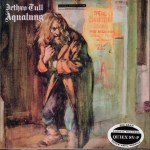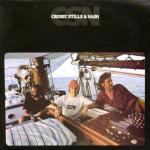
This commentary was probably written in 2010 or thereabouts, since that’s the date on Fremer’s Aqualung review, which, for those with much more tolerance for audiophile BS than I am able to muster, can be found here. I’ve made a few changes to the commentary below, but most of the original text has been left intact.
We recently put up a Hot Stamper Aqualung that just BLEW THE DOORS OFF the CLASSIC 200g pressing. Michael Fremer may think the new reissue is the ultimate pressing, but we sure don’t.
The Aqualung shootout on his site is priceless. He has so many silly things to say about it, let’s not waste any more time and get right to them.
His Shootout Begins
He says he “… compared Classic’s new 200g reissue with: 1) an original UK Chrysalis 2) an original American Chrysalis/Warner Brothers, 3) an original French Pink Label Island, 4) The Mobile Fidelity ½ speed mastered edition and 5) DCC’s 180g issue mastered by the team of Hoffman and Gray.”

How many of each? One, right? (All the articles in front of the nouns are singular. Assuming MF is using good grammar, how many could there be?)
Mikey, that’s your first mistake.
When it comes to the domestic release, one is a wholly inadequate sample size for pressings that were pumped out by the millions and therefore mastered multiple times. Go to Discogs if you want to see just how many different stamper numbers can be found in the original Reprise pressings. Hint: it’s a lot. Some of them are known to us to be awful, some fall into the middle of the pack, and some we like. Figuring out which are which has taken us a lifetime of work and is well beyond the ability of any single person to decode for more than a few dozen records.
Maybe you got hold of a bad sounding “original American Chrysalis/Warner Brothers,” did you ever think of that? The record bins are full of them.
If you did get hold of a bad one — and all the evidence points in that direction — the time and effort you put into your shootout just went flying out the window, defenestrated as some might say.
Shootouts using only a small number of pressings have very little value.
Anybody who claims to know anything about records ought to know that.
This next line just floors me.
Now rather than make value judgments, let’s just compare without prejudice.
This guy may not be good for much, but he sure is good for a laugh.
Does he really expect us to believe that the comments that follow are not biased in any way, that they are The Truth, that he is able to measure “intimacy and warmth” and tell us precisely how much of each there is on any given pressing? Who in his right mind thinks like that? (At this rate he may end up wandering about a park with snot running down his nose, greasy fingers smearing shabby clothes, but let’s hope it doesn’t come to that. Help is available; perhaps Stereophile has a mental health plan under which he could be covered.)
Soon enough he goes on to give his opinion as to the merits of each of the pressings noted above. I’m sorry, did I say opinion? I meant comparisons without prejudice. Sorry, my bad.
The Big Truth
And of course he is more than welcome to make any and all the comparisons he deems fit, each from that lovely sample size of one. And if he wants to add another sample (size = 1) to the mix by playing the DCC gold CD, he’s welcome to do that too, which he did. I’m guessing that his CD player is every bit as accurate as his front end (comprising turntable/ arm/ cartridge/ phono stage/ cables), which, if he were to ascribe a number to the accuracy of all the pieces that make up this chain, would have to be in the 100% or so range. Or as the late John McLaughlin might say, on a scale of one to ten: ten, meaning Metaphysically Accurate.
No colorations. No imperfections. Pure Truth, and nothing but.
I could go on like this for days, but even I’m getting tired of it. Without a basic understanding of records and the wide variation in the quality of pressings, you cannot design a testing protocol that will result in any meaningful findings.
You end up with a pseudo shootout, custom made for an audience of one, especially one who never wants to be wrong. If you are not trying to separate truth from falsehood, open to the possibility of overturning your preconceived notions by the proper use of the scientific method, how can you learn anything?
Pseudoscience
What you have here is a man practicing the worst sort of pseudoscience: the kind of science that looks like you know what you are doing when in fact you haven’t got a clue. His carefully controlled experiment, free from prejudice or bias of any kind, using only the finest scientific instruments (some expensive front end, with some unknown setup, in some — from the looks of it — very problematic basement listening room), playing to a listening panel of exactly one, with all of six pressings on hand, is anything but.
The results — unrepeatable of course, and why would anyone bother to follow his approach? — speak for themselves.
More to the Point
The acquisition of critical listening skills is vitally important if you want to make progress in this hobby.
But critical thinking skills are much more important, because without them you make the kind of mental errors that this reviewer makes over and over again.
If your thinking about records and audio is as confused as Fremer’s, your chances of learning how to do either one well are small. In the more than 25 years that I have been cataloging this fellow’s mistakes, I have seen very little evidence that he’s learned much at all.
Classic Records
The new Classic is a decent enough record. On Fremer’s scale of one to eleven, I might give it a ten for music, and about a seven for sound. (He gives it nines for each, for what that’s worth.)
The commentary for the proper shootout we did back in 2008 can be found here. We had around twenty copies of Aqualung, culled from a pool of maybe forty or so. When we get one that doesn’t sound too hot we don’t put it in the shootout pile, we put it in the shit pile and take it back to the store we got it from, or donate it to the Goodwill, or sell it on ebay.
Let’s just say our results did not match Mr. Fremer’s. Anyone who would like to do the shootout for himself is welcome to buy one of our Hot Stamper pressings of Aqualung, and a Classic pressing if they so choose, and have at it.
(more…)











 As a die-hard MoFi fan, that sealed the deal: now I had to buy a CD player. I picked up a cheap Magnavox player, I think it ran me less than $100, and played my new Sittin’ In CD, which, as I recall, sounded pretty good. (One of my other early CD purchases was Tumbleweed Connection, the regular label release, and it was not good at all.)
As a die-hard MoFi fan, that sealed the deal: now I had to buy a CD player. I picked up a cheap Magnavox player, I think it ran me less than $100, and played my new Sittin’ In CD, which, as I recall, sounded pretty good. (One of my other early CD purchases was Tumbleweed Connection, the regular label release, and it was not good at all.)
 Record Collecting for Audiophiles
Record Collecting for Audiophiles